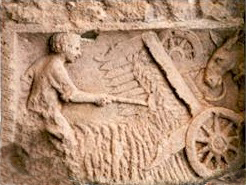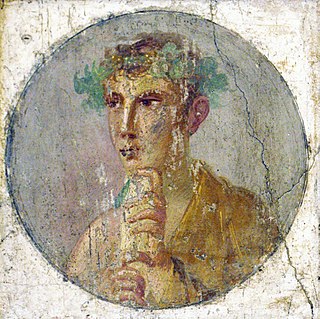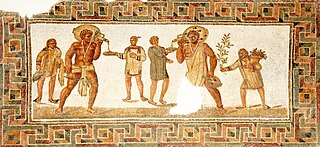Related Research Articles

Property is a system of rights that gives people legal control of valuable things, and also refers to the valuable things themselves. Depending on the nature of the property, an owner of property may have the right to consume, alter, share, redefine, rent, mortgage, pawn, sell, exchange, transfer, give away, or destroy it, or to exclude others from doing these things, as well as to perhaps abandon it; whereas regardless of the nature of the property, the owner thereof has the right to properly use it under the granted property rights.
Property law is the area of law that governs the various forms of ownership in real property (land) and personal property. Property refers to legally protected claims to resources, such as land and personal property, including intellectual property. Property can be exchanged through contract law, and if property is violated, one could sue under tort law to protect it.

Roman law is the legal system of ancient Rome, including the legal developments spanning over a thousand years of jurisprudence, from the Twelve Tables, to the Corpus Juris Civilis ordered by Eastern Roman emperor Justinian I. Roman law forms the basic framework for civil law, the most widely used legal system today, and the terms are sometimes used synonymously. The historical importance of Roman law is reflected by the continued use of Latin legal terminology in many legal systems influenced by it, including common law.

The Laws of the Twelve Tables was the legislation that stood at the foundation of Roman law. Formally promulgated in 449 BC, the Tables consolidated earlier traditions into an enduring set of laws.
Usucaption, also known as acquisitive prescription, is a concept found in civil law systems and has its origin in the Roman law of property.
Nexum was a debt bondage contract in the early Roman Republic. A debtor pledged his person as collateral if he defaulted on his loan. Details as to the contract are obscure and some modern scholars dispute its existence. It was allegedly abolished either in 326 or 313 BC.

Roman agriculture describes the farming practices of ancient Rome, during a period of over 1000 years. From humble beginnings, the Roman Republic and the Roman Empire expanded to rule much of Europe, northern Africa, and the Middle East and thus comprised many agricultural environments of which the Mediterranean climate of dry, hot summers and cool, rainy winter was the most common. Within the Mediterranean area, a triad of crops were most important: grains, olives, and grapes.

In Roman law, status describes a person's legal status. The individual could be a Roman citizen, unlike foreigners; or he could be free, unlike slaves; or he could have a certain position in a Roman family either as head of the family, or as a lower member.
In Roman Law, the lex Iunia Norbana classified all freedmen into two classes according to their mode of enfranchisement: enfranchised citizens, and enfranchised Latini. The date of this lex is uncertain, with arguments for as early as 25 BC or more commonly 17 BC, or as late as AD 19.
The Lex Aelia Sentia was a law established in the Roman Empire in 4 AD. It was one of the laws that the Roman assemblies passed at the behest of the emperor Augustus. Along with the Lex Fufia Caninia of 2 BC, this law regulated the manumission of slaves.

Social class in ancient Rome was hierarchical, with multiple and overlapping social hierarchies. An individual's relative position in one might be higher or lower than in another, which complicated the social composition of Rome.

Slavery in ancient Rome played an important role in society and the economy. Unskilled or low-skill slaves labored in the fields, mines, and mills with few opportunities for advancement and little chance of freedom. Skilled and educated slaves—including artisans, chefs, domestic staff and personal attendants, entertainers, business managers, accountants and bankers, educators at all levels, secretaries and librarians, civil servants, and physicians—occupied a more privileged tier of servitude and could hope to obtain freedom through one of several well-defined paths with protections under the law. The possibility of manumission and subsequent citizenship was a distinguishing feature of Rome's system of slavery, resulting in a significant and influential number of freedpersons in Roman society.
Usucapio was a concept in Roman law that dealt with the acquisition of ownership of something through possession. It was subsequently developed as a principle of civil law systems, usucaption. It is similar to the common law concept of adverse possession, or acquiring land prescriptively.

In ancient Rome, the dediticii or peregrini dediticii were a class of free provincials who were neither slaves nor citizens holding either full Roman citizenship as cives or Latin rights as Latini.
The Institutes is a beginners' textbook on Roman private law written around 161 CE by the classical Roman jurist Gaius. The Institutes are considered to be "by far the most influential elementary-systematic presentation of Roman private law in late antiquity, the Middle Ages and modern times". The content of the textbook was considered to be lost until 1816, when a manuscript of it − probably of the 5th century − was discovered.
In Roman law, contracts could be divided between those in re, those that were consensual, and those that were innominate contracts in Roman law. Although Gaius only identifies a single type of contract in re, it is commonly thought that there were four types of these, as Justinian identifies: mutuum, commodatum, depositum (deposit) and pignus (pledge).

Res mancipi was one of the categories of property in Roman law. The other was res nec mancipi.
In ancient Roman law, commercium or ius commercii was a privilege granted to a non-citizen (peregrinus) or a holder of Latin rights to acquire property, make contracts, and trade in the same ways as a Roman citizen. The jurist Ulpian explained commercium as "the right of buying and selling reciprocally" .

Occupatio or occupation is a method of original acquisition of property in Scots law. It derives from the Roman law concept of the same name. Occupatio allows an occupier of an object (res) with the intention to own the property to become the owner. As most property in Scotland is owned, and with the caduciary right that all ownerless property falls to the Crown, its application is uncommon. Nevertheless, it remains a valid method of acquiring ownership in Scots law.

In ancient Rome, contubernium was a quasi-marital relationship between two slaves or between a slave (servus) and a free citizen who was usually a former slave or the child of a former slave. A slave involved in such a relationship was called contubernalis, the basic and general meaning of which was "companion".
References
- ↑ Forsythe, Gary, "Ubi tu gaius, ego gaia. New Light on an Old Roman Legal Saw," Historia 45.2 (1996), p. 241.
- ↑ Gallo, Filippo (1958). Studi sulla distinzione fra "res mancipi" e "res nec mancipi". Giappichelli. pp. 18, 19.
- ↑ De Zulueta, Francis (1946). The Institutes of Gaius. OUP. ISBN 0 19 825112 2.
- ↑ "The Institutes of Gaius". The Latin Library. Retrieved 23 March 2012.